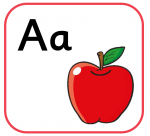5 Effective Methods to Teach Reading in Key Stage One
Effective reading teaching in Key Stage One is crucial for developing strong literacy skills in children. By using various methods and strategies, teachers can help pupils become confident and proficient readers. In this blog, we will explore five methods that can be used to teach reading effectively in Key Stage One.
"The more that you read, the more things you will know. The more that you learn, the more places you'll go." - Dr Seuss
Method 1: Phonics Instruction
 Phonics teaching is a foundational method for teaching reading. It involves teaching pupils the relationship between letters and sounds, helping them decode and read words.
Phonics teaching is a foundational method for teaching reading. It involves teaching pupils the relationship between letters and sounds, helping them decode and read words.
By understanding phonics, children can become independent readers and spellers. Research by Linnea C. Ehri, Professor of Educational Psychology, highlights the importance of phonics as an essential part of a balanced literacy program.
Method 2: Sight Word Recognition
Sight words, also known as high-frequency words, are words that appear frequently in written texts. Teaching pupils to recognise sight words helps them read fluently and with comprehension. Dr. Timothy Rasinski, Professor of Literacy Education, emphasises the significance of sight words as keys to fluency in reading. Introducing sight words through engaging activities and repetition can support pupils' reading development.
Method 3: Reading Aloud and Shared Reading
Reading aloud with children is a powerful method for building their knowledge and developing a love for reading.
The Becoming a Nation of Readers Report states that "Reading aloud is the single most important activity for building the knowledge required for eventual success in reading. Shared reading, where pupils read along with a teacher or a more proficient reader, enhances language development, vocabulary, and comprehension skills."
Method 4: Guided Reading
Guided reading is a strategy that involves providing individualised support to pupils at their reading level. It allows teachers to focus on specific reading skills and strategies to improve comprehension and fluency. Fountas & Pinnell, renowned literacy experts, emphasise the advantages of guided reading in helping pupils develop strategies for reading and understanding texts.
Method 5: Engaging Activities and Games
Make reading fun, not frustrating! Incorporating engaging activities and games into the teaching of reading can motivate pupils and make the learning process enjoyable. Jeanne S. Chall, from Harvard Graduate School of Education, suggests that games and activities that make learning to read fun will hold a child's attention longer and encourage them to continue reading. Consider using interactive games, role-playing, and creative storytelling to foster a love for books and reading.
Teaching reading effectively in Key Stage One requires a combination of methods and strategies. Phonics teaching, sight word recognition, reading aloud, shared reading, guided reading and engaging activities all contribute to building strong literacy skills in children. By implementing these methods, teachers can create a stimulating and supportive learning environment, fostering a love for reading that will benefit children throughout their lives.
